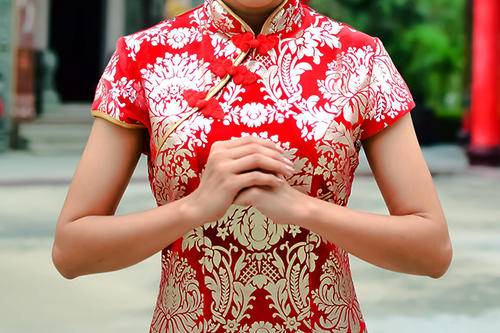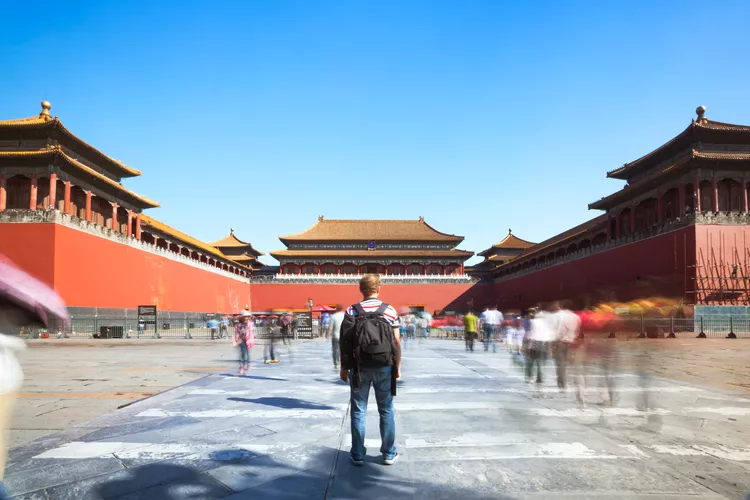The Complete Guide to Burning Incense in China: Traditions, Etiquette, and Cultural Significance
When traveling through China, you’ll encounter the fragrant clouds of incense at temples, monasteries, and sacred sites. The practice of burning incense (烧香, shāo xiāng) represents one of China’s most enduring spiritual traditions. Dating back over 2,000 years, this ritual connects the physical and spiritual worlds.
As a traveler in China, understanding how to properly burn incense shows respect for local customs. It also enriches your cultural experience. I’ve visited dozens of temples across China and witnessed both locals and tourists making unintentional mistakes during this sacred practice.
This guide will walk you through the complete process of burning incense in China. You’ll learn about its history, significance, and proper techniques. Whether you’re planning to visit Beijing’s Lama Temple or Shanghai’s Jing’an Temple, this knowledge will deepen your appreciation of Chinese spiritual practices.
Table of Contents
The Historical and Cultural Significance of Incense in China

Ancient Origins
Chinese incense burning traces back to the Xia Dynasty (2070-1600 BCE). Early practitioners used aromatic woods directly. By the Han Dynasty (206 BCE-220 CE), specialized incense recipes emerged. The practice evolved from royal ceremonies to everyday spiritual activities.
Ancient texts like the “Book of Rites” (礼记, Lǐjì) mention incense as essential for ancestor worship. The Tang Dynasty (618-907 CE) saw incense culture flourish alongside Buddhism and Daoism.
Spiritual Meaning
For Chinese people, burning incense creates a bridge between humans and deities or ancestors. The rising smoke symbolizes prayers traveling upward. Different religions in China use incense slightly differently:
- Buddhism: Incense represents moral perfection and purification
- Daoism: It balances natural energies and promotes harmony
- Confucianism: It shows filial piety during ancestor worship
Incense burning connects deeply with the concept of respect (尊重, zūnzhòng) in Chinese culture. This respect extends to ancestors, deities, and the natural world.
Types of Chinese Incense
Chinese incense comes in several forms, each with specific uses:
Joss Sticks (线香, xiàn xiāng)

These thin sticks represent the most common form used in temples. They burn for 30-60 minutes, depending on thickness. When visiting major temples like Wuhan’s Guiyuan Temple, you’ll see hundreds of these burning simultaneously.
Coils (盘香, pán xiāng)

Spiral-shaped incense hangs from temple ceilings. These burn for much longer—sometimes 24 hours. You’ll often see these in Hakka ancestral halls and southern Chinese temples.
Cones (塔香, tǎ xiāng)

These triangular incense pieces burn quickly, usually within 15 minutes. Home shrines and smaller temples often use these.
Incense Powder (粉香, fěn xiāng)

Used for specialized ceremonies, this loose incense burns on charcoal. Traditional ceremonies at sites like Beijing’s Temple of Heaven still use this ancient form.
Most tourist-accessible temples sell appropriate incense on-site. Prices typically range from 10-50 yuan ($1.50-$7.50) for a bundle, though luxury varieties can cost much more.
Step-by-Step Guide to Properly Burning Incense in China
Preparation Before Burning
Before beginning, ensure you approach with a respectful mindset. Many temples post specific instructions in both Chinese and English. Always follow local guidance when available.
Visitors should:
- Wash hands before handling incense (if facilities permit)
- Remove hats and sunglasses as a sign of respect
- Turn off mobile phones or set to silent mode
- Purchase proper incense from temple vendors rather than bringing your own
The Correct Technique
Step 1: Holding the Incense Hold the incense with both hands, with the burnable end pointing upward. Position your hands at chest level. This stance demonstrates respect and proper intention.
Step 2: Lighting the Incense Approach the designated flame source, usually a large central burner. Never light from another person’s offering. Ensure the tip catches fire, then gently blow out the flame, allowing it to smolder.
Step 3: The Three Bows (三拜, sān bài) While holding the lit incense:
- Face the main deity or altar
- Lower your head slightly
- Bend forward from the waist three times
- Some practitioners murmur prayers during this process
Step 4: Placing the Incense Insert your incense into the designated burner. Place it vertically, ensuring it stands straight. Crooked placement indicates haste or carelessness. Most temples have separate burners for different purposes (main deity, wealth god, etc.).
Step 5: Completing the Ritual After placing all incense sticks, step back. Make a final bow before leaving the immediate area. This completes the basic ritual.

During my visit to Hangzhou’s Lingyin Temple, I noticed locals spending several minutes in quiet contemplation after placing their incense. This reflection period forms an important part of the practice.
Common Mistakes to Avoid
As a frequent visitor to Chinese temples, I’ve observed several common errors made by tourists:
- Incorrect number of incense sticks: Traditional practice uses three sticks (representing Buddha, Dharma, and Sangha in Buddhism) or a single stick. Using random numbers can appear disrespectful.
- Waving incense: Some visitors wave burning incense around, creating safety hazards and disrupting others.
- Taking photos during prayers: This disturbs worshippers and shows disrespect.
- Touching sacred objects: Never touch temple statues or ritual implements unless specifically invited.
- Extinguishing incense prematurely: Allow your incense to burn completely.
Regional Variations in Incense Practices
China’s diverse regional traditions create variations in incense practices across the country.
Northern China
In Beijing and surrounding areas, incense rituals tend toward simplicity. The emphasis falls on the sincerity of prayer rather than elaborate gestures. At the Temple of Heaven, incense burning follows strict traditional protocols dating back to imperial times.
Southern China
Hong Kong and Guangdong temples often feature more elaborate incense displays. The Wong Tai Sin Temple in Hong Kong uses a fortune-telling practice called kau cim, where worshippers shake bamboo sticks while burning incense to receive divine guidance.

Western China
In Tibet and surrounding regions, incense incorporates local herbs and practices. Tibetan Buddhism uses incense in purification rituals before meditation. The incense here often contains juniper and other high-altitude plants.
Eastern China
Shanghai and Jiangsu province feature distinctive ceramic incense burners. In Suzhou’s gardens, incense burning connects with scholarly traditions and poetry appreciation.
Incense Etiquette at Different Sacred Sites
Different sacred spaces observe varied protocols for incense burning.
Buddhist Temples
Most Chinese Buddhist temples follow the three-incense tradition. Major sites like Hangzhou’s Lingyin Temple provide clear signage directing visitors through the proper sequence of halls and deities. The main Buddha receives incense first, followed by secondary deities.
At these temples, quieter prayers accompany incense offerings. Your visit path typically follows a clockwise direction through the temple complex.

Daoist Temples
Daoist sites like Beijing’s White Cloud Temple (白云观, Báiyún Guàn) use incense to harmonize natural energies. These temples often have separate altars for specific purposes like health, career, or family harmony.
Daoism emphasizes natural balance, so moderation in incense amounts reflects proper practice. Unlike Buddhist sites, some Daoist temples permit incense burning outdoors in special gardens.
Confucian Temples
These sites, like Qufu’s Confucius Temple in Shandong Province, focus on scholarly tradition and ancestral respect. Incense rituals here emphasize proper posture and precise movements reflecting Confucian values of propriety.
Ancestral Halls
Family ancestral halls maintain distinctive practices for honoring specific lineages. When visiting these sites as a tourist, always ask permission before participating in rituals.
The Environmental and Health Considerations

Traditional incense contains natural ingredients like sandalwood, agarwood, and Chinese herbs. However, modern mass-produced varieties may include synthetic chemicals. Consider these health aspects:
- Choose natural incense when possible
- Avoid direct inhalation of smoke
- Visit temples during less crowded times for better air quality
- Those with respiratory conditions should maintain distance from burners
Many temples now implement environmental measures. Shanghai’s Jade Buddha Temple installed air purification systems. Other sites limit total daily incense volumes or designate specific burning areas with improved ventilation.
Incense as Part of a Larger Spiritual Practice
For devout practitioners, incense burning represents just one element in a comprehensive spiritual system. Other common temple practices include:
Offering Flowers (供花, gòng huā)
Fresh flowers symbolize impermanence and the beauty of Buddhist teachings. Place these at designated areas, usually separate from incense burners.
Lighting Candles (点灯, diǎn dēng)
Candles represent wisdom illuminating darkness. Many temples provide electric versions for safety.
Offering Fruit or Food (供果, gòng guǒ)
Food offerings symbolize gratitude for abundance. These items usually go to temple kitchens after display.

Prostrations (礼拜, lǐbài)
Full body prostrations demonstrate complete devotion. Dedicated areas exist for this practice.
Meditation (禅修, chán xiū)
Many temples offer quiet spaces for reflection after completing incense rituals.
Personal Reflections: My Experience with Chinese Incense Traditions
During my decade exploring Chinese sacred sites, incense rituals transformed from curious tourist activities to meaningful cultural experiences. At Chengdu’s Wenshu Monastery, an elderly nun patiently corrected my technique. She explained that intention matters more than perfect movements.
In Taiwan’s Lungshan Temple, I witnessed the powerful community aspect of incense burning. Families came together across generations, teaching children the proper methods. The ritual clearly strengthened family bonds while honoring tradition.
My most profound experience occurred at Mount Wutai in Shanxi Province. In the pre-dawn hours, monks performed extensive incense ceremonies amidst mountain mist. The sensory experience—fragrant smoke merging with fog, chanting echoing across valleys—created an unforgettable spiritual atmosphere.
These experiences taught me that incense burning transcends simple ritual. It embodies core Chinese cultural values: respect for tradition, harmony with nature, family continuity, and spiritual mindfulness.
Practical Tips for Travelers
When planning to visit temples in China:
- Timing matters: Early morning (7-9am) offers the most serene atmosphere for temple visits.
- Dress appropriately: Wear modest clothing covering shoulders and knees.
- Learn basic terms: Memorize simple phrases like “请问” (qǐng wèn – excuse me) and “谢谢” (xiè xiè – thank you).
- Observe first: Before participating, watch locals complete the ritual.
- Ask permission: When uncertain, politely ask temple staff for guidance.
- Purchase incense on-site: This ensures appropriate types for that specific temple.
- Respect photography rules: Many inner sanctums prohibit photos.
Modern Interpretations and Evolving Practices
Today’s younger Chinese generations approach incense traditions with both reverence and adaptation. Urban professionals often visit temples during major life transitions or holidays rather than as regular practice.
Digital adaptations now exist as well. Some temples offer virtual incense-burning through WeChat mini-programs. While traditionalists debate these innovations, they reflect China’s balance of ancient wisdom with modern convenience.
Foreign visitors interested in deeper understanding should consider guided temple tours with cultural specialists. Cities like Xi’an and Chengdu offer expert-led experiences explaining the spiritual context behind these practices.

Conclusion: Preserving Ancient Wisdom in Modern Times
Incense burning in China represents more than scenic photo opportunities for travelers. These rituals connect modern practitioners with thousands of years of spiritual tradition. By learning proper techniques, visitors show respect while gaining deeper insights into Chinese culture.
When you next visit a Chinese temple, take a moment to observe the care with which locals perform these rituals. Notice the contemplative expressions as smoke rises toward temple rafters. This silent communion between past and present, human and divine, material and spiritual captures the essence of Chinese philosophical traditions.
Understanding incense practices enriches your travel experience beyond surface-level tourism. It reveals how spiritual traditions continue shaping contemporary Chinese society. Most importantly, it invites you to participate—however briefly—in one of humanity’s most enduring contemplative practices.
For travelers seeking authentic cultural experiences in China, few activities offer such direct connection to Chinese spiritual heritage as the mindful burning of incense.
This guide was created by Travel China With Me, drawing on years of experience leading cultural tours throughout China. For more insights on Chinese traditions or to book a guided temple experience, just contact our cultural specialists.









